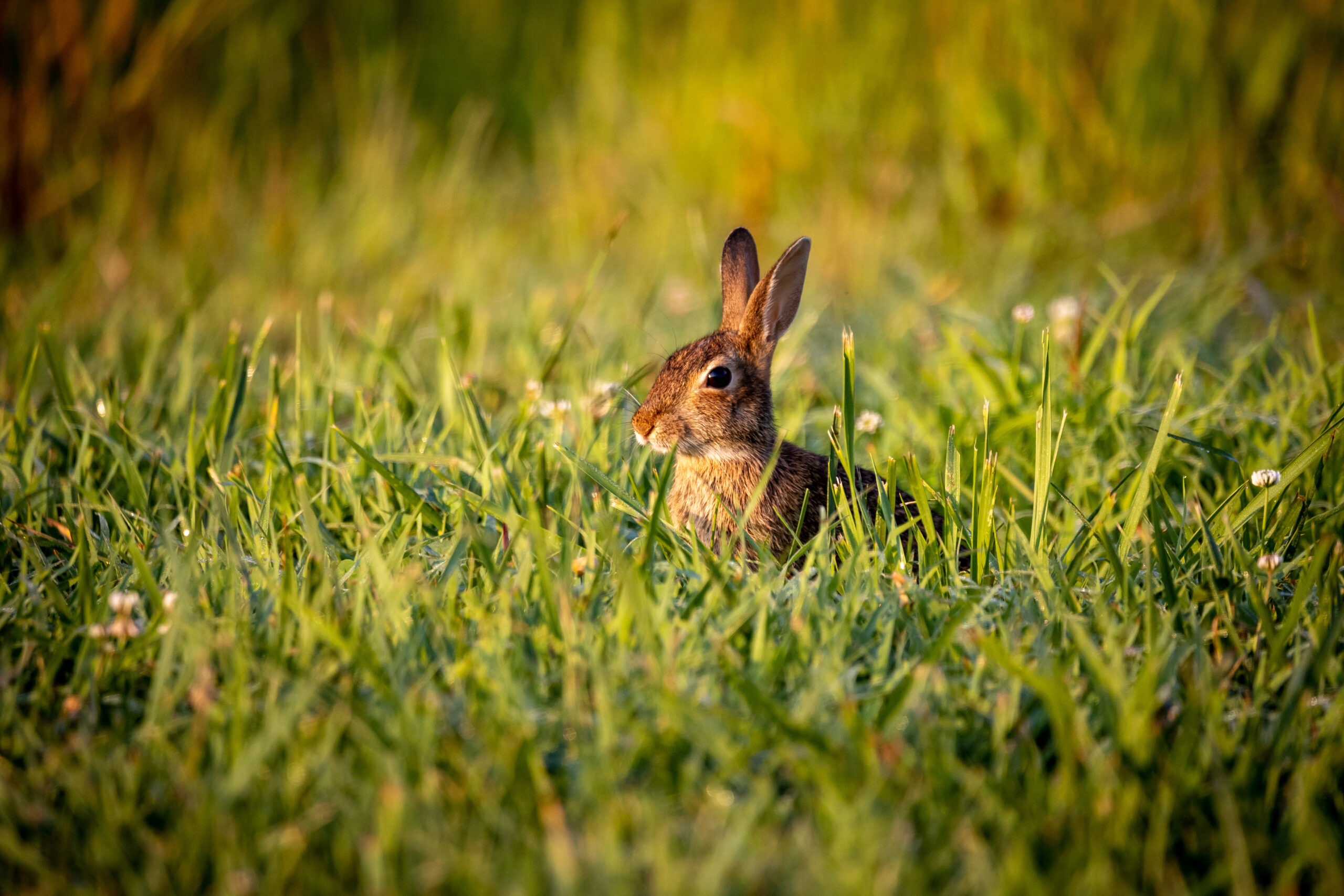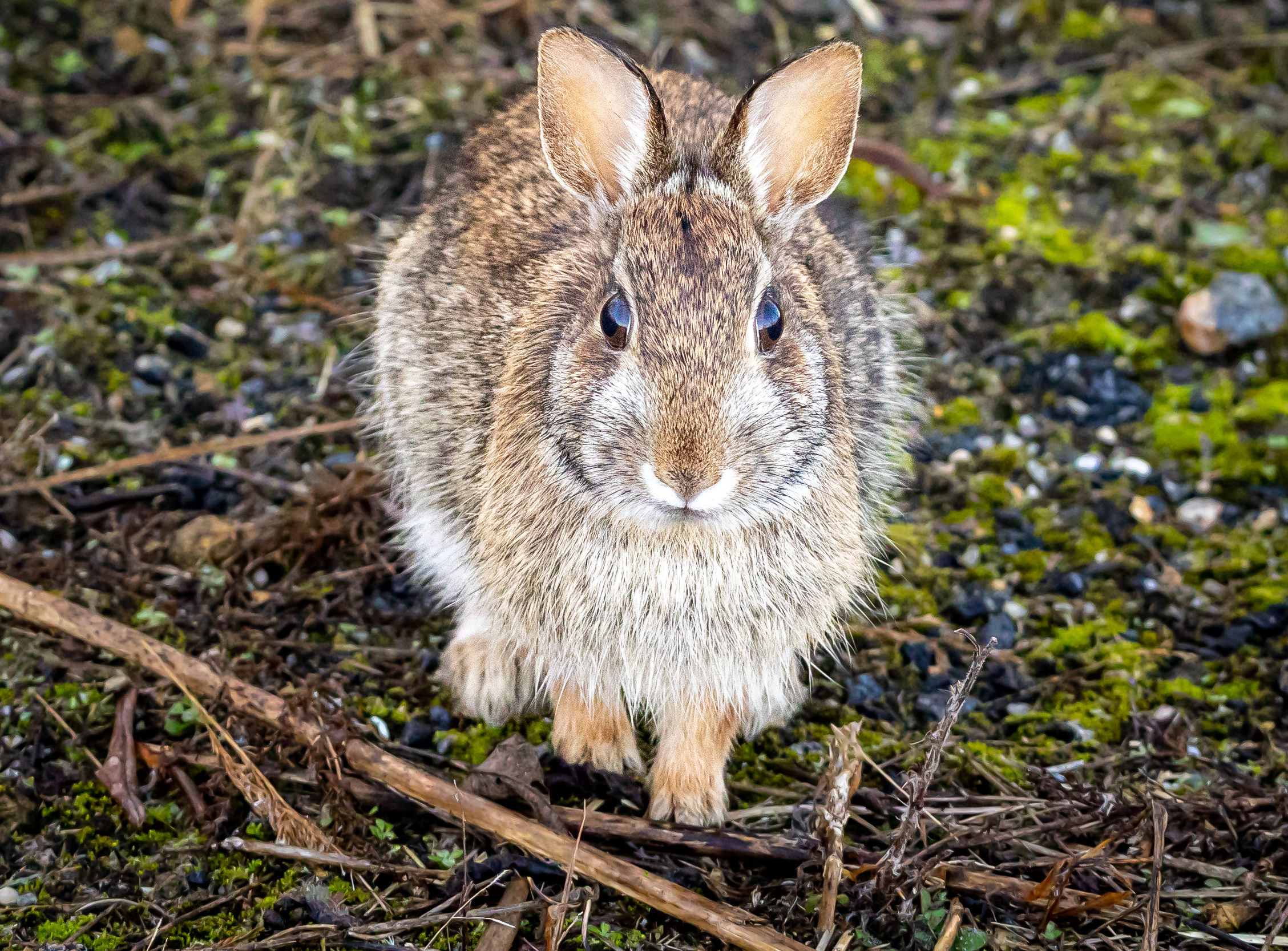


Eastern Cottontail Rabbit (Sylvilagus floridanus)
Rehab Criteria: Rabbits at least four inches long with open eyes and erect ears and who hop well are independent from their mother and should be allowed to fend for themselves. Uninjured baby rabbits in an intact nest should also be left alone. Although they might look abandoned because their mom isn’t around, mother rabbits visit their dependent young only a few times a day to avoid attracting predators. If the nest has been disturbed, lightly cover it with natural materials you find around the nest, like grass, fur or leaves and follow these steps:
- Keep all pets out of the area.
- Use yarn or string to make a tic-tac-toe pattern over the nest to assess whether the mother is returning to nurse their young. Check back 24 hours later.
- If the yarn or string was moved aside, but the nest is still covered with fur, grass or leaves, the mother has returned to nurse the babies.
- If the “X” remains undisturbed for 24 hours, contact us to assist.
When rescuing small wild animals, it’s a good idea to wear gloves. Be aware, however, that gloves provide only a small amount of protection, and that most mammals can easily bite through them. Raccoons, skunks, bats and some foxes are more likely than other mammals to carry rabies, but any wild animal may carry the disease. There are a number of other serious or fatal diseases that can be transmitted to humans, so you must take care that the animal doesn’t bite you.
Physcial characteristics: Brown/Gray/Reddish/White with cotton ball like tail (thus, its name)
Long ears
Up to 3.5 pounds as an adult
Up to 20 inches from nose to tail
Lifespan: 2-3 years (high mortality rate – on the bottom of the food chain)
Habitat: prefer shrub-dominated habitats but can also be found in fields, woodlands, swampy areas, thickets, and anywhere there is sufficient forage and some sort of coverage
Diet: grasses, clover, sprouts, vines, shrubs, fruits, garden greens, vegetables, and the twigs and bark of some trees during the winter
Family life: Breeding season is February – September. Usually 3-6 blind babies/kits per litter with 3-7 letters per year. Mother nurses babies at dawn and dusk only and avoids the nest (usually in depressions in the ground lined with grasses and fur tufts from mom) as to not attract predators to the babies. Independent by 3 weeks old.
Predators: Foxes, coyotes, raptors, bobcats, snakes (babies)
Other significant threats: cats, dogs, humans
Special considerations/Interesting facts: They stay hidden during the day and come out at night to eat, they are most active in twilight hours (crepuscular). It is documented that they can hop up to 18 miles per hour to escape predators and are excellent at dodging them by a zig zag pattern. Prior to taking flight, you can often see the cottontail “freeze” as a method of blending in with their environment. If these methods do not work, rabbits will try to fight off a predator by biting and kicking with their powerful back legs. They can sense predators from a significant distance by standing on their hind legs, they have an excellent sense of smell and hearing. They are extremely prone to stress and do not fair well with human interaction. Humans often think that the mother has abandoned the nest and will call for assistance too soon, thus kidnapping the kits. All efforts should be made to keep mothers and babies together – rabbit mothers are dedicated to the preservation of her kits and will stay away from the nest to avoid bringing predators to the nest.
